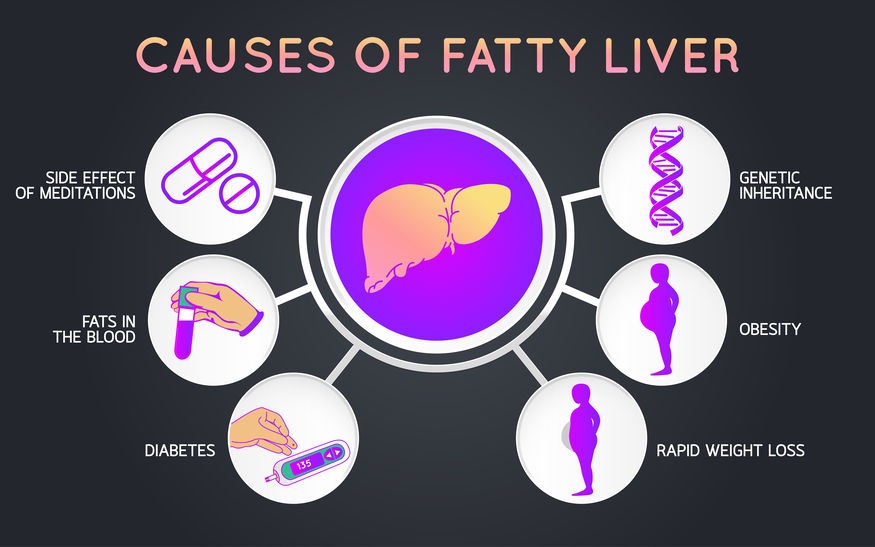Increase In Fatty Liver Disease Amongst Young Adults As A Result Of Global Obesity Crisis
Source: Thailand Medical News Jan 17, 2020 5 years, 11 months, 2 weeks, 5 hours, 39 minutes ago
A new published research has found that one in five
young people have
fatty liver disease (
steatosis), with one in 40 having already developed
liver scarring (
fibrosis). The study, published in
The Lancet Gastroenterology & Hepatology, is the first to attempt to determine the prevalence of
fatty liver disease and
fibrosis in
young healthy adults in the UK. According to certain meta studies, the global figures for these are almost similar if not higher.

Typically,
fatty liver disease is a condition in which fats build up in the cells of the
liver. It is broadly split into
non-alcoholic fatty liver disease (
NAFLD), which is usually seen in people who are overweight or
obese, and alcohol related
fatty liver disease, which is associated with harmful levels of drinking. If left untreated both can lead to
fibrosis (
scarring of the
liver) and in severe cases eventually cirrhosis of the
liver, which is irreversible. Worldwide
NAFLD affects approximately a quarter of adults in developed countries.
The new research, conducted by Dr. Kushala Abeysekera and researchers from the University of Bristol, looked at data collected from 4,021 participants of the Children of the 90s study also known as Avon Longitudinal Study of Parents and Children (ALSPAC). Based in Bristol, participants from the health study who had previously been assessed for
NAFLD as
teenagers using ultrasound,were invited for assessment using transient elastography with FibroScan as part of the Focus @24 clinic.
Medical researchers first looked at those participants who did not report harmful alcohol consumption and found that one in five had
non-alcoholic fatty liver disease. On widening the data to include all participants, they again found that over 20 per cent displayed evidence of
fatty liver disease and one in 40 had already developed
fibrosis, with those participants who had both
fatty liver and harmful alcohol use at greatest risk of
liver scarring. As a comparison, at 17 years of age, 2.5 per cent of participants had moderate to severe levels of
fatty liver, whilst at the age of 24 this number had increased to 13 per cent.
"Children of the 90s data has highlighted the potential importance of
liver health amongst young adults. This age group remains a blind spot for clinicians, as they are typically considered a ‘healthy’ age group that are rarely studied. If the
obesity epidemic and culture of alcohol abuse aren't tackled nationally, we may see increasing numbers of patients presenting with end-stage
liver disease, and at e
arlier ages. It is important to note that whilst we identified that 20 per cent of the cohort had
fatty liver, only a small percentage of the individuals will go on to develop cirrhosis (irreversible
liver scarring), and the vast majority of participants should be fine if they manage their diet and exercise appropriately." explained Dr. Abeysekera, Honorary Lecturer in the Bristol Medical School: Population Health Sciences during a phone interview with
Thailand Medical News.
The researcher team next steps will be to take a closer look at how environmental and genetic factors may lead to individuals developing
non-alcoholic fatty liver disease earlier in life.
Reference : 'Prevalence of steatosis and fibrosis in young adults in the UK: a population-based study' by Kushala W M Abeysekera, Gwen S Fernandes, Gemma Hammerton, Andrew J Portal, Fiona H Gordon, Jon Heron, Matthew Hickman in The Lancet Gastroenterology & Hepatology
Published:January 15, 2020, DOI:https://doi.org/10.1016/S2468-1253(19)30419-4
